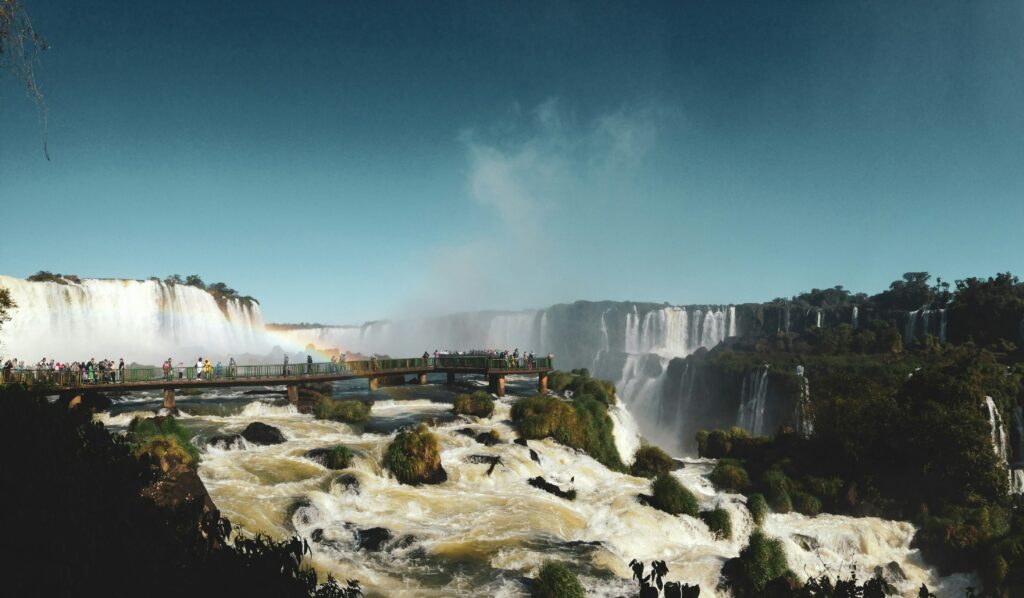In Argentina, every frame feels rich with story. The spray of Iguazú Falls, the crack of glacier ice, and the late‑night tango rhythms in Buenos Aires alleys: all invite a camera’s eye. But to really photograph Argentina in all its contrasts, it helps to follow a thoughtfully paced path. That’s where well‑designed tours to Argentina can provide the backbone, giving you freedom to chase light while not having to worry about logistics.
Framing the falls: Iguazú’s cinematic power
The moment you first glimpse Iguazú, the sheer scale stops you in your tracks. From the walkways, you’ll see water plunging over cliffs, swirling mist, and rainbows arcing in the haze. For photographers, this is a dream of motion and texture.
To capture Iguazú at its best, aim for early morning or late afternoon when light is softer and shadows more dramatic. Use longer exposures for silky water on quieter cascades, and faster shutter speeds when you want the power frozen in droplets. Don’t neglect the rainforest around—you’ll find vibrant butterflies, foliage, and wildlife that frame the falls in context. Stepping slightly off the beaten path (when your tour allows) often leads to compositions few travelers see.
Patagonia’s grand silence: ice, peaks, wilderness
Then head south. In Patagonia, the grandeur is vast and the mood is austere. There’s Hernando’s “feel of silence” when the wind stills over a glacier. The play of glacier crevasses, the glow of dawn on peaks, the calm of mountain lakes—they all invite careful framing.
Mount Fitz Roy and the jagged spires near El Chaltén make for dramatic silhouettes. At Perito Moreno, position yourself where you can let chunks of ice breaking off add dynamic energy. Changing skies—storms rolling in, clouds shifting—become part of the image.
Because distances are long, your tour’s route planning matters. Make sure your itinerary gives you buffer time in Patagonia. When you aren’t racing, you can revisit locations, try different light angles, or wait out changing conditions.
Tango streets: Buenos Aires in motion
Switching gears, Buenos Aires offers a human rhythm that complements the wild. Narrow alleys in San Telmo, color‑washed walls in La Boca, and nocturnal tango dancers in dim-lit cafés: these are the smaller stories.
For street photography, walk late into the night or early at dawn. Use ambient light, neon signs, and street lamps. Let the motion of dancers, couples, stray dogs, or traffic blur just enough to breathe. Seek the contrast of polished façades and worn corners. Watch how locals move through these neighborhoods: those moments often make the frame.
Include urban texture—graffiti walls, shadows cast by wrought iron balconies, old posters peeling off walls. These add layers to your narrative of city life.

Composing your visual arc
One tip is to imagine your photography as a story arc: begin with Iguazú’s drama, deepen with Patagonia’s wilderness, and conclude with city intimacy in Buenos Aires. That arc gives contrast and allows your images to breathe.
Within that story, alternate scales: broad landscapes, mid‑range views, closeups of details. Let one image be a sweeping glacier valley, the next a texture on bark or a figure in doorway. Those transitions make your gallery feel alive rather than repetitive.
When your tour allows free time, revisit prior spots under new light. A waterfall you shot at midday can transform beautifully at dusk. A street corner you passed by might reveal a moment of paused conversation.
Choosing the right tour to support your vision
Because Argentina covers so many visual atmospheres, choosing a tour that balances structure with flexibility is crucial. Ideally, the tour includes domestic flights so you don’t waste precious daylight traveling. It should allocate enough nights in Patagonia to absorb the environment. It should allow “open” chunks—mornings or evenings free to roam.
Also look for partnerships with local guides who understand light and place. Tours that include photography‑friendly extras—early entry, optional twilight excursions, or graded hiking access—can make a difference.
A strong option is when a provider packages tours to Argentina that combine key natural and cultural highlights while still giving you space to pursue your visual instincts. With that support, you can arrive curious, not exhausted, and let your camera travel freely.

Your gear, your pace, your vision
Keep your kit agile: a zoom with reach, a compact prime, a sturdy but portable tripod. Filters help (ND, polarizer). Bring backup cards and batteries, especially in cold or humid zones.
Travel light enough that you can change direction quickly. Your best photos often come when you deviate—when you pause for the uncertain moment, not the expected one.
Match your pace to your vision. You don’t have to tick off every monument; linger where your eye lingers. When the falls roar, let the camera listen. When a glacier wall crackles, let your lens echo it. And in a Buenos Aires night, let your frame dance.

